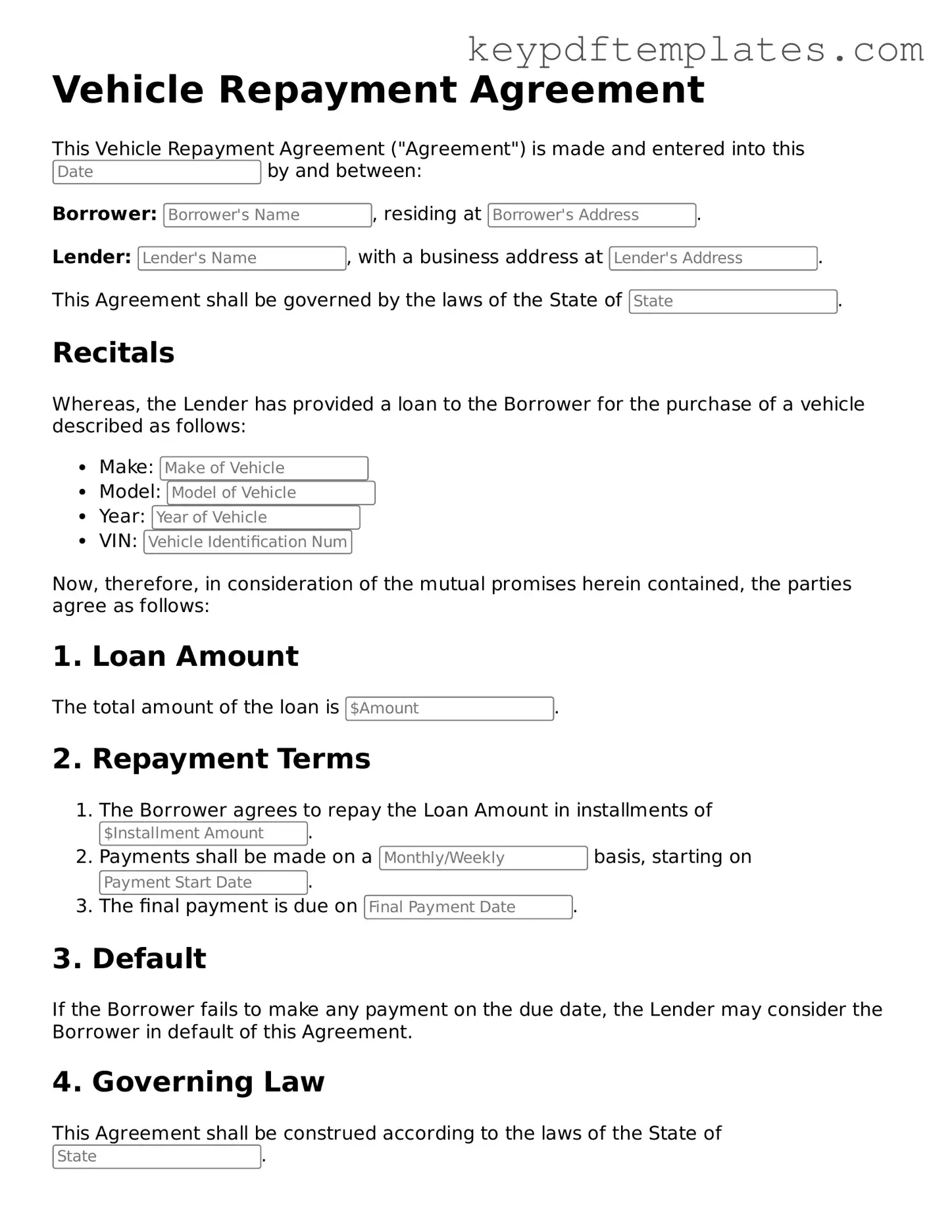Printable Vehicle Repayment Agreement Template
The Vehicle Repayment Agreement form is a crucial document that outlines the terms under which a borrower agrees to repay a loan for a vehicle. This agreement helps both the lender and borrower clearly understand their obligations, ensuring a smooth transaction. By establishing clear expectations, it promotes accountability and protects the interests of both parties involved.
Modify Document Online
